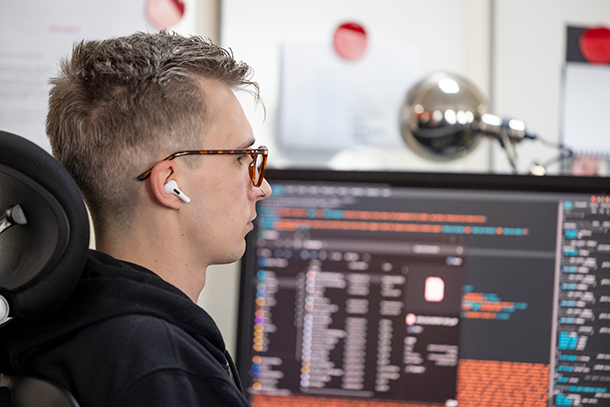11th December 2018
Let’s start with a statement from Google:
“Mobile-first indexing means that Googlebot will now use the mobile version of your site for indexing and ranking, to better help our (primarily mobile) users find what they’re looking for. Google’s crawling, indexing and ranking systems have historically used the desktop version of your site’s content, which can cause issues for mobile searchers when the desktop version differs from the mobile version.”
So why is site speed/page load speed important?
- Slow pages could cause more people to leave before they have got what they came for, reducing conversions, especially on mobile devices or on slower networks.
- Slow pages and websites could be marked down by Google – Your search rankings could be negatively affected.
Or put another way…
Fast loading pages = more visitors to your site and more conversions of those visitors.
Statistics show that around 50% of visitors leave if a site takes more than 3 seconds to load and that nearly 80% of visitors will not return if they have issues with a page loading and formatting properly.
In 2018, with more than 50% of traffic coming from mobile devices, much of your traffic is likely to be on slower connections and that makes optimising your site even more important.
So what things affect a website’s speed?
Some of the main poor performance offenders…
- Hosting infrastructure – weedy servers, not optimised for WordPress (our most popular content management system)
- Not using a Content Delivery Network (CDN) to serve content locally to the user
- Themes & Plugins – overuse and poor selection of contributed plugins and themes
- Poorly optimised content, videos, downloads etc
- Bloated databases – which slow a server’s ability to process requests
- Not leveraging browser caching – stylesheets, images, JavaScript files, and more should be cached by your browser so they don’t need to be loaded on a subsequent visit.
- Not considering minimal ‘flat’ designs that use CSS instead of images and reusable page elements
Making sites faster can get very technical very quickly but here are some of the most important factors that should be considered whether you’re a coder or not.
Designing for speed
Producing fast loading web pages starts with planning and design. A ‘flat’ design philosophy employs bold and simple layouts, using CSS styles rather than images for backgrounds, box edges, corners and icons etc. Good, flat design makes the user interface clean, distraction-free and the page load quickly on all devices.
Plugins, modules and bloated themes
Using downloadable themes will always result in a bloated and slow CMS install. ‘A website in a box’ is a powerful thing if you don’t have the design or development skill to build exactly what you need. A downloaded theme will have many ‘tools’ in the form of theme elements and plugins that added together simply have a negative performance overhead. At Rouge, we will build a site from the ground-up, using best practice and only with code that we need to deliver the site that your audience and business needs. Have a look at the Rouge Media Home page for fast page load in action.
Content optimisation
A website only becomes a useful business tool when it’s used and regularly updated. Once the client is generating new content and uploading images and downloadable assets like PDFs, there’s a need to make sure that all content is optimised for speed and performance. An image only needs to be as big as the space in the page that it sits in (rather than uploading a large image and using the code to shrink it). Image and video should always be in the right format and be well compressed. New formats like .webp will make the web a more visually exciting and accessible place. More on images and the web in up-coming blog articles.
Hosting
Choosing the right host is key for performance. Using a shared environment with too many other users puts you at the mercy of what load other sites are demanding. Optimised servers for the CMS you’re using with performance as part of the host’s offering will ensure that the infrastructure is doing its part in the complex chain that delivers your site to the user. Make sure that the host is using the latest version of server software and server-side languages – see our blog on PHP7
The use of content delivery networks (CDNs) delvers the site content to the user from a server close to them; especially important if you’re a global business. Pages and content simply load faster as the content is shared across servers. Using a CDN also helps with security by optimising security certificate delivery and making denial of service attacks (DDoS) harder.
And if you’re interested in some of the more technical factors…
- Eliminating render-blocking resources – deferring non-critical things that stop the content you need for being displayed quickly.
- Minify CSS/JS/HTML – physically compress the code by removing the white space.
- Defer offscreen images – Lazy-loading images means displaying an image when a user scrolls to that point on a page.
- Browser caching – making sure that assets (like your logo) that don’t change regularly can stay in your browser’s cache rather than be downloaded on each page load or visit.
- Server caching – like browser caching but the server creates a very optimised version of the webpage after the first visit. This process saves time as the page does not have to be ‘constructed’ every time someone wants to see it.
- Compressing network payloads – using servers-side compression tools like Gzip makes files smaller and faster to transfer.
- Use the latest underlying technologies like PHP7 and HTTP2.0
How does your site perform? https://developers.google.com/speed/pagespeed/insights/
So, if you are having issues with your current WordPress site or want to use a developer that understands what needs to be done (and why) then please do contact us, we’d be pleased to help.





